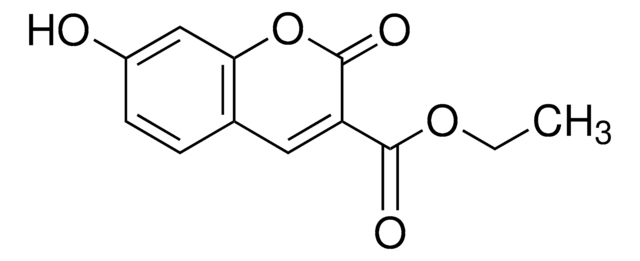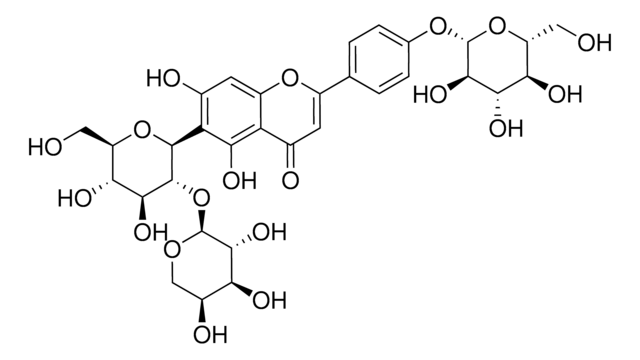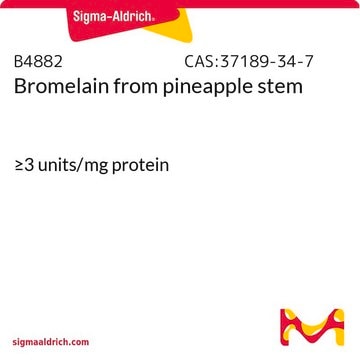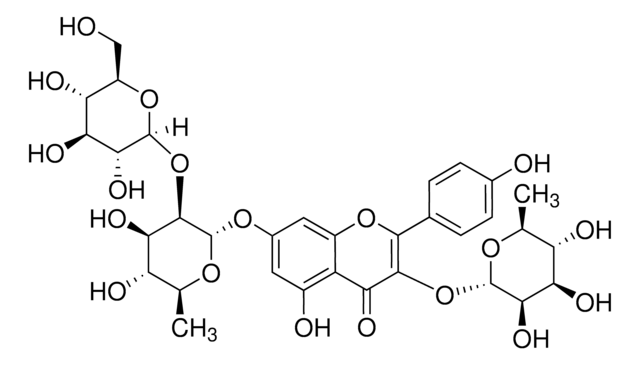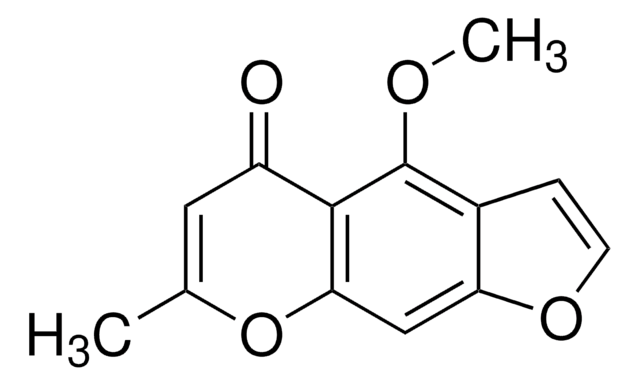SML3268
Vaccarin
≥98% (HPLC)
Synonym(s):
6-(2-O-α-L-Arabinopyranosyl-β-D-glucopyranosyl)-2-[4-(β-D-glucopyranosyloxy)phenyl]-5,7-dihydroxy-4H-1-benzopyran-4-one, CID 44257777
Sign Into View Organizational & Contract Pricing
All Photos(1)
About This Item
Empirical Formula (Hill Notation):
C32H38O19
CAS Number:
Molecular Weight:
726.63
MDL number:
UNSPSC Code:
12352200
NACRES:
NA.77
Recommended Products
Quality Level
Assay
≥98% (HPLC)
form
powder
color
white to beige
solubility
DMSO: 2 mg/mL, clear (Warmed)
storage temp.
-10 to -25°C
Biochem/physiol Actions
Vaccarin is a main active ingredient of medical plant Semen Vaccaria that exhibits varies biological activities including antidiabetic, endothelial cell injury prevention, angiogenesis promotion, wound healing, and liver protection. Vvaccarin protects the intestinal barrier by inhibiting the ERK/MLCK signaling pathway in type 2 diabetic mice.
Storage Class Code
11 - Combustible Solids
WGK
WGK 3
Flash Point(F)
Not applicable
Flash Point(C)
Not applicable
Certificates of Analysis (COA)
Search for Certificates of Analysis (COA) by entering the products Lot/Batch Number. Lot and Batch Numbers can be found on a product’s label following the words ‘Lot’ or ‘Batch’.
Already Own This Product?
Find documentation for the products that you have recently purchased in the Document Library.
Bao Hou et al.
Acta cirurgica brasileira, 34(12), e201901202-e201901202 (2020-02-13)
To explore the potential role and unclear molecular mechanisms of vaccarin in wound healing. Rats' skin excision model to study the effects of vaccarin on wound healing in vivo . Hematoxylin and eosin staining was performed to evaluate Histopathologic characteristics.
Jiang-Nan Sun et al.
European journal of pharmacology, 908, 174375-174375 (2021-07-26)
Hyperglycemia and insulin resistance drive intestinal barrier dysfunction in type 2 diabetes (T2DM). Vaccarin, the main active component in the semen of traditional Chinese medicine Vaccaria has a definite effect on T2DM mice. The purpose of this study was to
Yixiao Liu et al.
International journal of molecular sciences, 21(6) (2020-03-19)
Diabetes mellitus is a growing global health issue nearly across the world. Diabetic patients who are prone to develop diabetes-related complications often exhibit progressive neuropathy (painless and sensory loss). It is usual for small wounds to progress to ulceration, which
Our team of scientists has experience in all areas of research including Life Science, Material Science, Chemical Synthesis, Chromatography, Analytical and many others.
Contact Technical Service